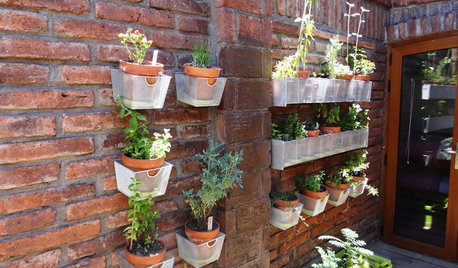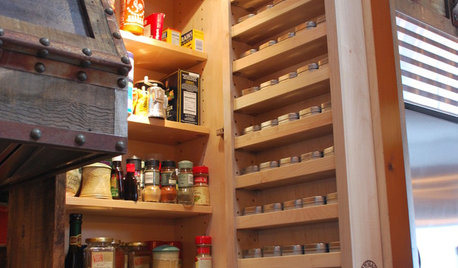Stacked Tire Worm and Potato Farm Combo
african
14 years ago
Related Stories

EDIBLE GARDENSHouzz Call: Where Are the Craziest Places You Grow Edibles?
Basil in a bathtub, spinach stacked up a wall ... If your edibles occupy an odd spot, we’d like to know
Full Story
FARM YOUR YARDHow to Build a Raised Bed for Your Veggies and Plants
Whether you’re farming your parking strip or beautifying your backyard, a planting box you make yourself can come in mighty handy
Full Story
EDIBLE GARDENSHow to Grow Your Own Sweet Summer Crops
This guide will help any gardener get started on growing the freshest warm-season veggies and berries for summer
Full Story
GARDENING GUIDES10 Easy Edibles for First-Time Gardeners
Focus on these beginner-friendly vegetables, herbs, beans and salad greens to start a home farm with little fuss
Full Story
FARM YOUR YARDHow to Grow Vegetables in Containers
Get glorious vegetables and fruits on your patio with a pro’s guidance — including his personal recipe for potting mix
Full Story
FARM YOUR YARDHouzz Call: Show Us Your One-of-a-Kind Chicken Coops
Do you have a fun or stylish backyard shelter for your feathered friends? Post your pictures and stories in the Comments!
Full Story
FARM YOUR YARDHello, Honey: Beekeeping Anywhere for Fun, Food and Good Deeds
We need pollinators, and they increasingly need us too. Here, why and how to be a bee friend
Full Story
KITCHEN DESIGN7 Steps to Pantry Perfection
Learn from one homeowner’s plan to reorganize her pantry for real life
Full Story
ENTERTAININGSimple Pleasures: The Reimagined Potluck
Party guests can bring more to the table than just the food. Enlisting help with setup, decorations and drinks spreads the work and the fun
Full Story
GARDENING GUIDES13 Risks to Take for True Garden Rewards
Go ahead, be a rebel. Breaking rules in the garden can lead to more happiness, creativity and connection with the earth
Full StoryMore Discussions






beebiz1960
africanOriginal Author
Related Professionals
Windham Landscape Architects & Landscape Designers · Cottonwood Landscape Architects & Landscape Designers · Redondo Beach Landscape Architects & Landscape Designers · Elmhurst Landscape Contractors · Hickory Hills Landscape Contractors · La Vista Landscape Contractors · Petaluma Landscape Contractors · Suitland Landscape Contractors · Centereach General Contractors · Coffeyville General Contractors · Fort Salonga General Contractors · New Braunfels General Contractors · Parsons General Contractors · Warren General Contractors · Winton General Contractorsbeebiz1960
mbbarnes
joe.jr317
africanOriginal Author
joe.jr317
joe.jr317